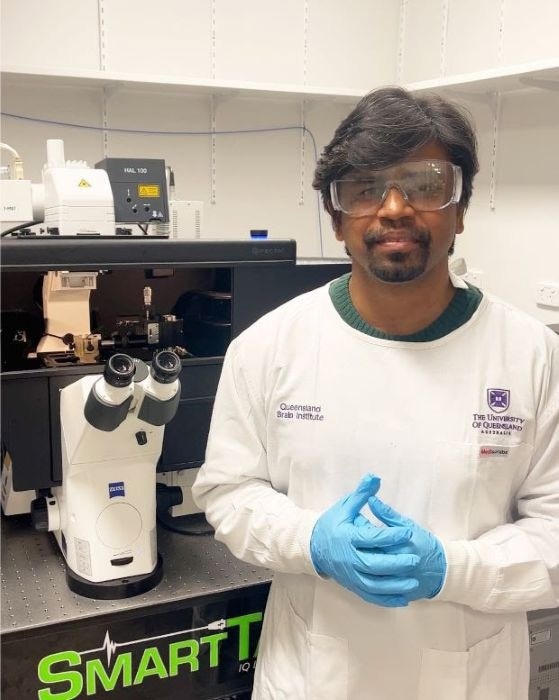A new device combining ultrasound and advanced imaging to provide crucial information for the safe delivery of drugs into the brain has been developed by University of Queensland researchers.

Image Credit: The University of Queensland
Dr Pranesh Padmanabhan from UQ’s School of Biomedical Sciences and Queensland Brain Institute said the device allows real-time observation of individual cells after ultrasound treatment, which is an emerging technology for the delivery of drugs past the blood-brain barrier.
The information learned about how treated cells respond and change could ultimately benefit the treatment of neurodegenerative brain disorders such as Alzheimer's and Parkinson’s disease.
“The blood-brain barrier prevents most drug uptake into the brain,’’ Dr Padmanabhan said.
“Insights from this device will help inform ultrasound treatment protocols and establish a balance where uptake of drugs into the brain is effective, yet still safe.’’
The custom-built device will examine sonoporation-based drug delivery.
Sonoporation is an emerging strategy involving ultrasound-based treatment combined with injected ‘microbubbles’.
In this process, sound waves interact with the microbubbles causing them to vibrate and exert force on the blood-brain barrier to create a tiny pore at the cell surface.
Dr Padmanabhan said the device, developed over 5 years, will allow researchers to identify and map changes in treated cells and observe how they respond and recover.
“This device will enable scientists to understand how ultrasound-based treatments work at the single-molecule and single-cell levels,’’ he said.
“It has the potential to improve treatment of neurodegenerative diseases, where drugs target specific areas of the brain.
“The goal is really to improve the rate of uptake of drugs into the brain, as currently only about 1-2 percent of small molecule drugs actually reach it.
“The results could also help inform treatment in other medical fields where sonoporation shows great promise, including cardiology and oncology.’’
The research is published in Journal of Controlled Release.